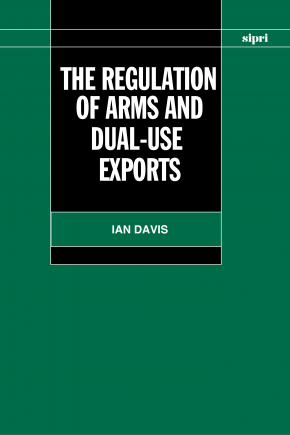The Regulation of Arms and Dual-use Exports: Germany, Sweden and the UK
This study analyses the reasons for and the broad implications of the post-cold war reforms of arms and dual-use export controls in three members of the European Union. It conceptualizes the arms export policy process as a policy system, involving the interaction of three basic elements: the policy environment, policy stakeholders and public policies.
Three national case studies explore the major problems and paradoxes of practical regulatory activity in Germany, Sweden and the United Kingdom. The differences in their approaches—including variations in the export control criteria, controlled goods, decision-making bodies, licensing decisions and enforcement procedures—are rooted in each state's unique historical normative framework.
Evidence is also presented of policy convergence within the EU as a whole. While COCOM was the main instrument of convergence during the cold war, the most significant instrument of convergence in the 1990s was EU integration.
The main conclusions are that the process of European integration in the 1990s led to a significant but incomplete convergence of the three states' arms and dual-use export controls; convergence has gone further for dual-use technologies than for military goods; convergence accelerated during the late 1990s as a result of the introduction of the EU Code of Conduct on Arms Exports and common measures to combat illicit trafficking in small arms; convergence is more advanced for policy-making structures than for policy-execution structures; and further convergence can be expected in the next decade.
1. Introduction
Part I. Setting the context
2. Regulation of the global arms market: National and multilateral defence-related export controls past and present
Part II. The development of common regulatory policies within the European Union
3. The EU Dual-Use Regulation: Breaking the supremacy of national sovereignty in arms and dual-use export controls
4. Common European measures for controlling conventional weapons: The EU Code of Conduct on Arms Exports
Part III. Regulations in practice: national export controls in the UK, Germany and Sweden
5. The regulation of arms and dual-use exports in the United Kingdom: Towards a self-regulatory model?
6. The regulation of arms and dual-use exports in Germany: The legalistic model
7. The regulation of arms and dual-use exports in Sweden: The cooperative model
8. A comparative analysis of the regulatory regimes in the UK, Germany and Sweden: The convergence-divergence mix explained
9. Conclusions
Part IV. Appendices
Appendix A. National and multilateral statements on controlling arms exports
Appendix B. Other EU documents relating to non-proliferation of conventional arms

